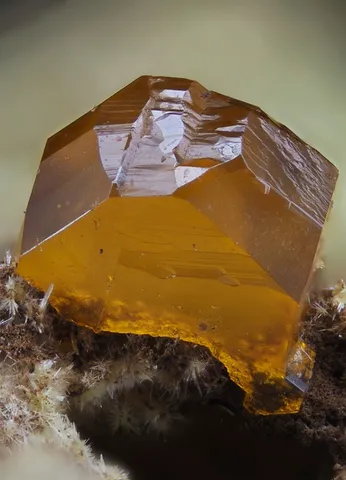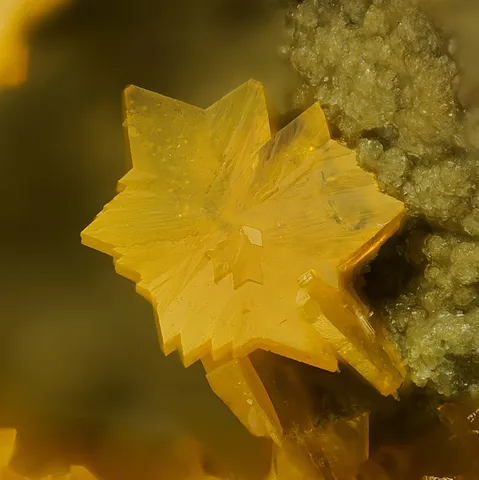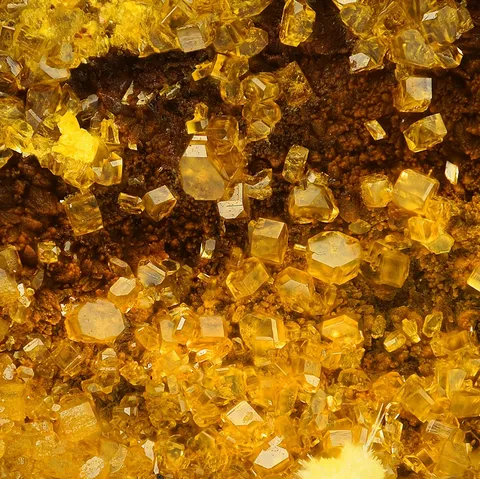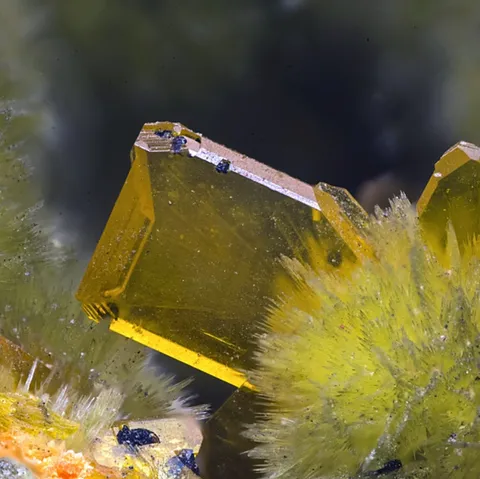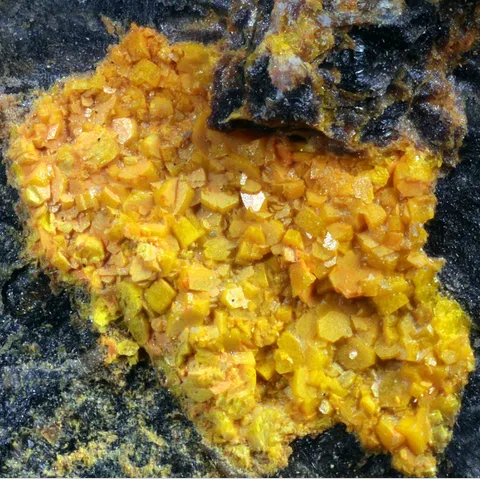BILLIETITE
Class : Oxides and hydroxides
Subclass : Uranyl hydroxide
Crystal System : Orthorhombic
Chemistry : Ba(UO2)6O4(OH)6 4H2O
Rarity : Very rare
Billietite is a very rare mineral from the oxidation zone of uranium deposits. It is a companion of other secondary uranium minerals (especially becquerilite, studtite, fourmarierite...) which, like it, result from the meteoric oxidation of uraninite. However, its formation requires the presence of barium in the rock. In the absence of this element, calcium becquerelite is formed. Its name was given to it in honor of the Belgian crystallographer Valère Louis Billiet. Its crystals are tabular, yellow with pseudohexagonal contours, sometimes elongated.
Main photo : Billietite from Shinkolobwe Mine, Katanga, Democratic Republic of Congo © Uwe Haubenreisser
Billietite in the World
Twinning and special crystallizations
Twins are very common on {110} and {111} resulting in 6 pointed stars.
Fakes and treatments
No fake or treatment recorded for this mineral species.
Hardness : 2 to 3
Density : 5.3
Fracture : Irregular
Trace : Yellow
TP : Translucent to transparent
RI : 1.725 to 1.829
Birefringence : 0.065 to 0.099
Optical character : Biaxial -
Pleochroism : Visible
Fluorescence : Yellow to green
Solubility : -
Magnetism : None
Radioactivity : Very strong

